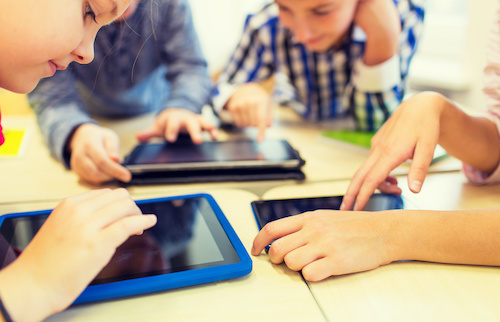Gamification is one of the best ways to review previous coursework throughout the semester. In advanced placement (AP) courses, the end goal is to pass the placement test at the end of the year, but there is a lot of information on those exams. For example, the AP US History exam covers nine time periods of relatively dense information. Gamifying these materials with fun and engaging weekly review sessions is a great way to engage students.
Educators already use this concept with Reading Counts (RC) quizzes in elementary and middle schools. Nearly every school seems to have some sort of RC point-associated pizza party to incentivize individual reading. While this is a great way to motivate students, offering a pizza party once a semester is not a perfect model by any stretch of the imagination. Accruing points based on effort in learning is the basis for most grade point systems. However, as grade inflation continues, students seem to care less that they are not getting an A in the class, because it doesn’t mean as much. What does matter is having more RC points than your classmates or being on the winning Jeopardy! team on Friday’s review.
In our technologically rich culture, we have already found ways to gamify normally lackluster activities. Exercise is an obvious example. Apps like Strava allow you to share your runs with friends and actively see what other people are doing. The Apple Fitness app counts your steps and positively reinforces your activity by automatically setting goals. Even PokemonGo had massive impacts on normally immobile people to get up and move around. All these apps make exercise feel like a game. In drawing from these concepts, educators should determine ways to restructure instruction and to turn the classroom (and professional development) into a place for gamification, positive reinforcement, and rewards.
Even some of the basic facets of gaming used in badging programs and similar programs can help engage students and teachers to learn more. Artificial intelligence (AI) offers the potential to further enhance the gamification of K-12 education by creating immersive learning experiences. Virtual reality (VR) and augmented reality (AR) technologies powered by AI can transport students to virtual worlds where they can explore historical landmarks, conduct scientific experiments, or solve complex math problems in a gamified environment. These interactive simulations provide hands-on learning opportunities that promote active participation and deeper understanding of the subject matter. AI algorithms can analyze student interactions within these virtual environments, offering real-time feedback and guidance, thereby facilitating learning and encouraging self-reflection. Using both traditional and AI-supported gamification, teaching and learning can become a captivating and effective journey of discovery for students.
Gamification may have the potential to provide the level of engagement that Thomas Edison projected in the 1920s with the advent of instructional film. As educators have access to more robust technology, the instructor still needs to figure out how to best use it to engage each student.
Related:
Is it time to fire up gaming consoles in classrooms?
How to use Minecraft Education in your classroom
- 4 ways admins can support teachers’ technology use - July 28, 2023
- Why AI’s flaws won’t slow its adoption - July 28, 2023
- The future of gamification - July 27, 2023

